Mistakes I Made Photographing The Total Solar Eclipse
April 27, 2024
Last Updated on November 6, 2024 by Erin Donahue
What a whirlwind the first quarter of 2024 has been! On April 8, 2024, I witnessed and photographed my first total solar eclipse. It was such an incredible experience!
After a month away in Taiwan and Japan, I thought I was going to jump on another plane and head down to Texas to photograph the solar eclipse. However, 48 hours before I was set to travel to Texas, I completely scrapped my plans because the weather forecast was not looking good, and pivoted to going to Vermont instead. Talk about spontaneity!
Disclosure: Some links may be affiliate links. This means that I may earn a small commission if you decide to buy (at no additional cost to you).
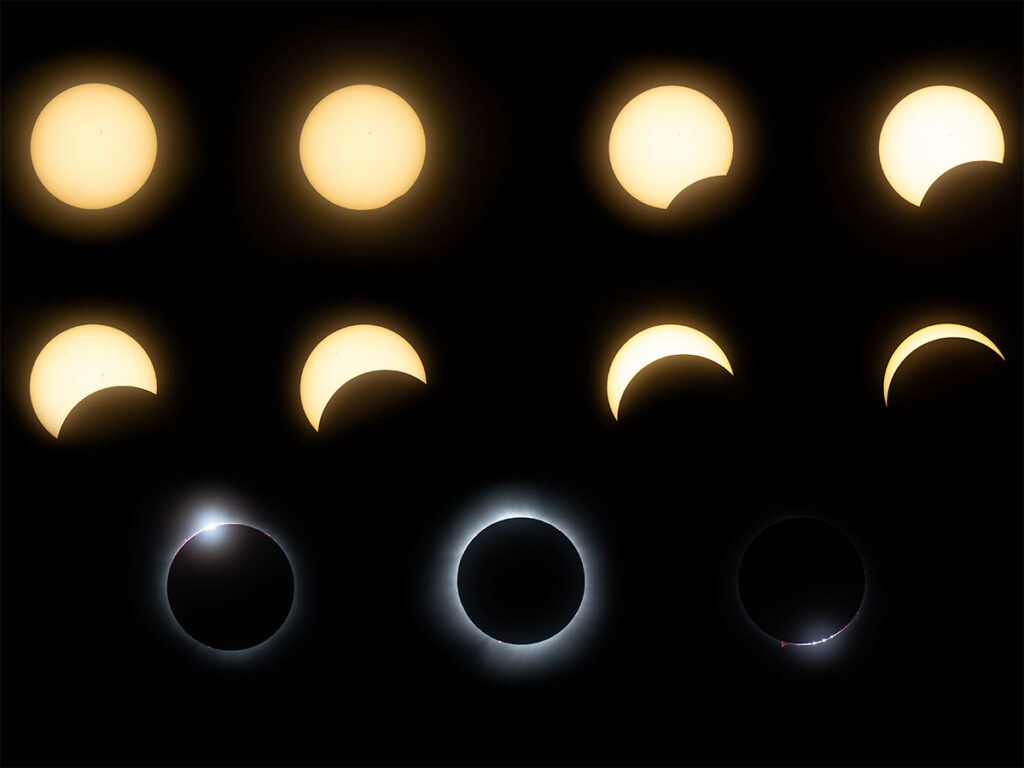
Initial Plans To See The Total Solar Eclipse
To be honest, I didn’t plan much for this event. When I visited Chile in 2022, I learned that people who chase these natural phenomena plan way in advance. Individuals from around the globe, not just from the country itself, travel to the path of totality in anticipation of witnessing the total solar eclipse firsthand. I mulled over whether or not I was going to photograph the total solar eclipse when the time came, but after some prodding from fellow NYC photographers, and as someone who suffers from FOMO, I started making arrangements.
The last total solar eclipse in North America was in 2017. I distinctly remember sitting at my cubicle in Weehawken not understanding what was so special about the moon crossing in front of the sun. That’s because New York and New Jersey weren’t along the path then, and they still weren’t this time either.
Heading to Texas
Originally, the plan was to take pictures from Eagle Pass, Texas, a town just outside of San Antonio and a mere 3 miles from the US-Mexico border. Something to note, right before this trip, Eagle Pass was making headlines due to the contentious immigration issue in Texas v. United States. Yikes.
By the time I started looking into booking accommodations (about 6 months out), hotels in Eagle Pass were already sold out. I managed to find a hidden gem Airbnb deal, only to have the owner cancel my reservation 5 minutes after booking. Thankfully, after meticulously searching on Google Maps, I found a budget hotel in Cotulla. This is why I’m forever Team Hotels; there’s too much risk with Airbnb.
To cover most of my airfare, I used my Venture X annual travel credit and paid the remaining balance with some miles. I booked a flight two days before eclipse day because the price difference between two days out and one day out was stark. I refuse to pay over $500 for a flight to Texas. Closer to the eclipse date, I noticed that flight prices were soaring, with some people looking to book flights at prices exceeding $2,500. Outrageous!
Despite all that, none of it ended up mattering because I had to cancel everything and instead went on a road trip to Northern Vermont.
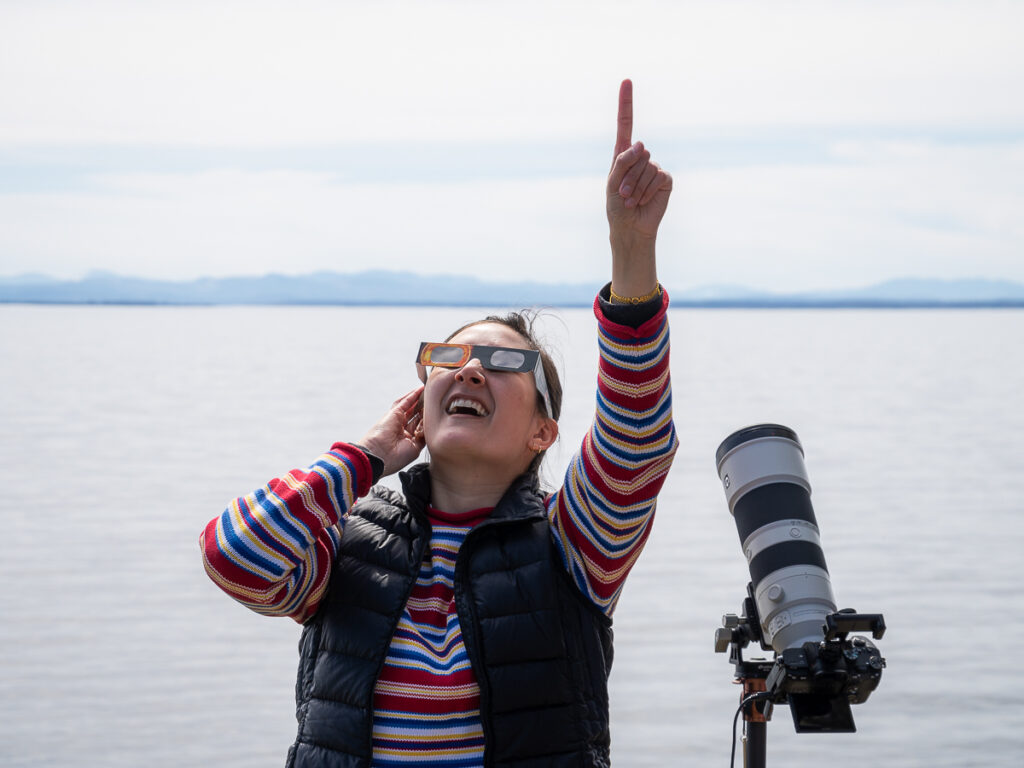
Last Minute Plans To See The Total Solar Eclipse
Fortunately, my hotel and car rental were cancellable, but I did lose money on my flight because I booked through the Capital One Travel Portal. Well, the annual credit and miles. That credit could’ve been used elsewhere, like a roundtrip flight to Europe or the Caribbean!
Typically, I book directly with the airline, but I was tempted by Capital One’s policy of 5x points on flight bookings. This experience reminded me of the importance of booking directly with the airline. I’m still salty about the loss, but it was the right decision by far. Having gone through this planning ordeal, I’ve had a change of heart and now believe that this is one of those things you should be spontaneous about and be more flexible with. Learn from my mistake be sure to always book a refundable ticket and/or directly with the airline to get travel credit back at the bare minimum.
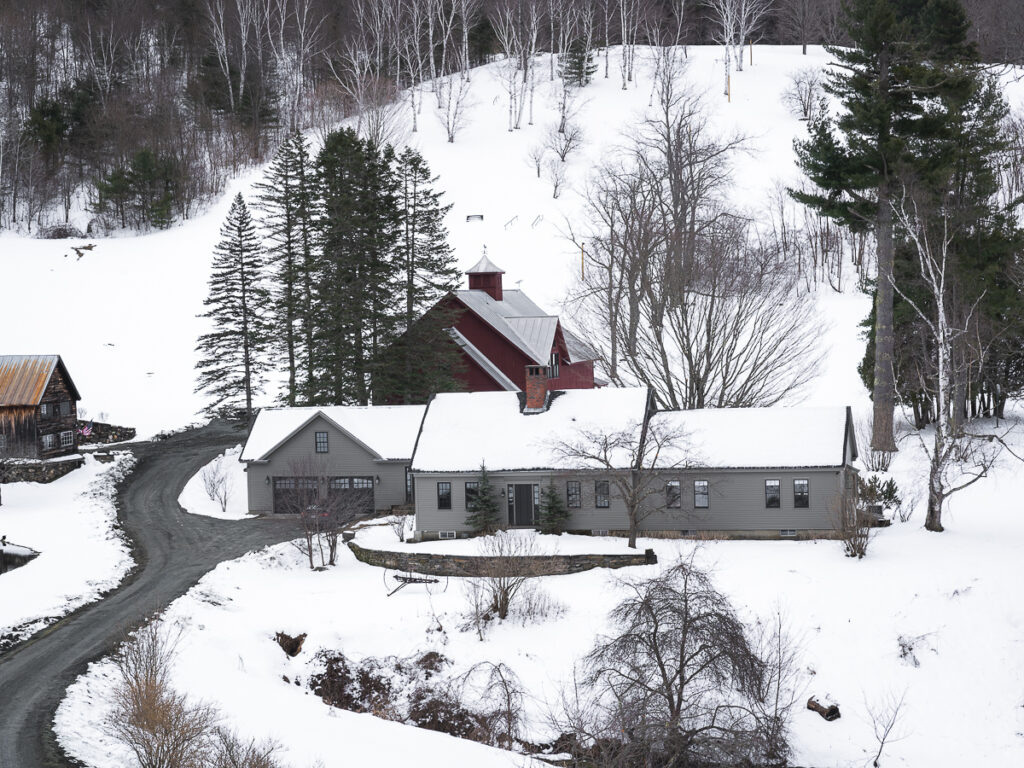
Camera Gear Needed To Photograph A Total Solar Eclipse
Now the good part. Obviously, we have to talk about camera gear.
Camera Lens
Since this is an infrequent subject to photograph, using a telephoto zoom lens is highly recommended. The greater the focal length, the larger the sun will appear due to compression. I used Sony’s 200-600mm F5.6-6.3 G OSS Telephoto Zoom Lens (SEL200600G). It’s worth noting that sticking to 600mm is advisable, despite some suggestions online to use a converter. Unless you’re specifically photographing detail shots, a converter isn’t necessary. You want to be mindful of including the wisps of the corona that spread out across the frame during totality. At 600mm, even 500mm, that’ll be able to capture everything in the scene.
Lens Filter
The most crucial accessory to get is a solar filter for your camera. Solar filters & ND filters are not the same thing. While a solar filter is a type of ND filter at over 10-20 stops, solar filters also cut UV (ultraviolet) and IR (infrared) rays, which protect your camera’s sensor.
Only during a total solar eclipse can you remove the filter during totality. This is because the moon completely blocks the sun, making it too dark to photograph if you leave the filter on. During this type of totality, you can also remove eye protection. For any other solar eclipse, DO NOT take off the filter as it can damage your sensor, and don’t take off eye protection either.
Tripod
Be sure the payload of your tripod can handle the weight of your telephoto lens. My go-to tripod is the Leo Carbon Fiber Tripod by 3 Legged Thing which is suited for travel.
When I was at Sony Kando, I tried out the 600mm f4 GM lens and didn’t take into account how heavy it would be for my tripod. At the time, I also didn’t realize the handle (or “foot”) is there to screw into the tripod so that the weight is more evenly distributed. When I tried taking pictures of the sunset and moon, my tripod couldn’t handle the weight and I was left scrambling and just holding up my camera with my hands.
Pan & tilt tripod head
Most tripod setups are with Arca ball heads. Unless you use one of the thicker ball heads, using a pan & tilt head is better for stability. Not only that, they can be more accurate when moving the tripod head around.
Remote Control Shutter
The final essential camera accessory for photographing a total solar eclipse is a remote control shutter. I rarely use one, just typically use the camera’s internal intervalometer, but I’m so glad I brought it with me for this.
It’s worth noting that unless you have a star tracker, creating a timelapse, while zoomed in with a telephoto lens, is nearly impossible. It’s feasible with a wide-angle lens, but not with a telephoto lens. The limited space within the frame and the sun’s constant movement across the sky require you to adjust the framing every few minutes. This constant touching of the setup can lead to camera shake, potentially ruining the shot. That actually happened to my friend who was next to me photographing the total solar eclipse. Right at totality he was trying to record a video and touched the camera at the wrong time, leading to a visible shake in the recording. He could have avoided that if he had brought a remote control shutter.
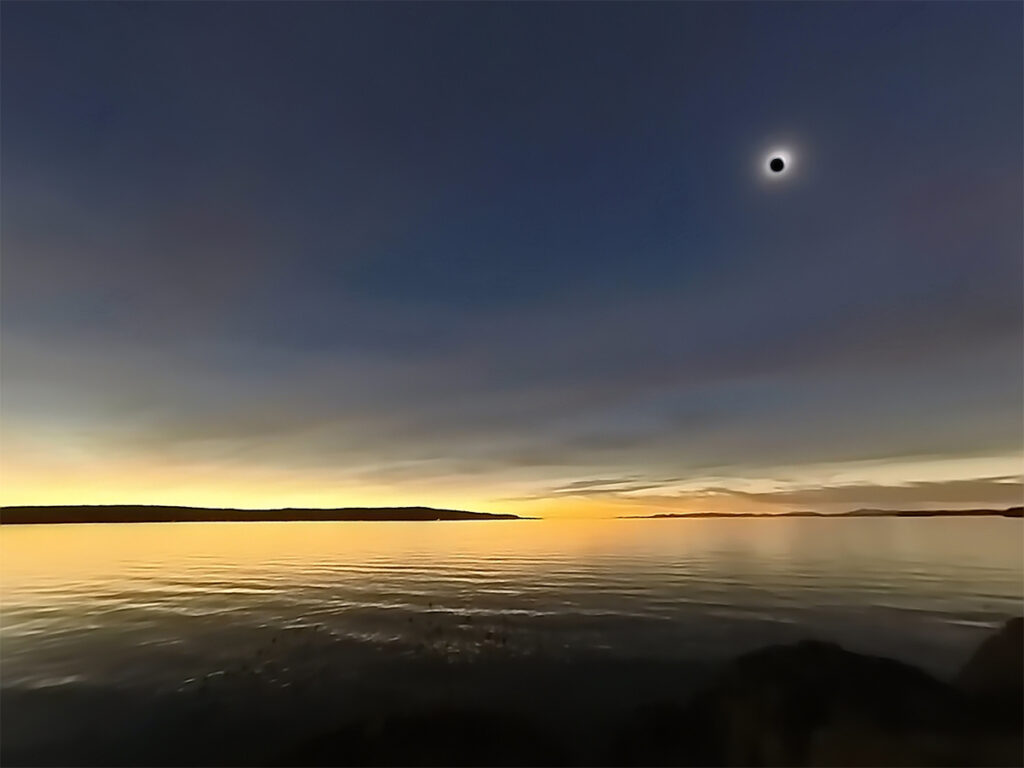
Camera Settings To Photograph The Total Solar Eclipse
I won’t share specific camera settings because my main takeaway from this experience is to stick with what you know when it comes to photography! Leading up to the eclipse, there was so much noise online about the best settings for capturing the eclipse. The recommendations were all over the place, with some even suggesting to shoot at f/22! I don’t know anyone who has ever shot at that aperture. It became clear to me that there was no consensus.
I ended up doubting myself and how to take pictures! Honestly, I’m not entirely satisfied with my photos because they weren’t taken with the ideal settings. I’m not too worried though since there will be more opportunities in the future.
One thing you should definitely do is create a shot list. I managed to photograph the corona, Baily’s Beads, and the “diamond ring”. However, I forgot to take a wide-angle shot, record a video with the zoom lens, and I missed taking a self-portrait because I relied on others to help me. I failed to take charge and do these myself when time was running out, so my advice is not to rely on others, even if you’re in a group, because everyone will be focused on their own shots. Trust me on this. I also bracketed my shots, but I’m not sure if it was necessary. I suppose it’s still a good practice to have a variety of exposures, just in case.
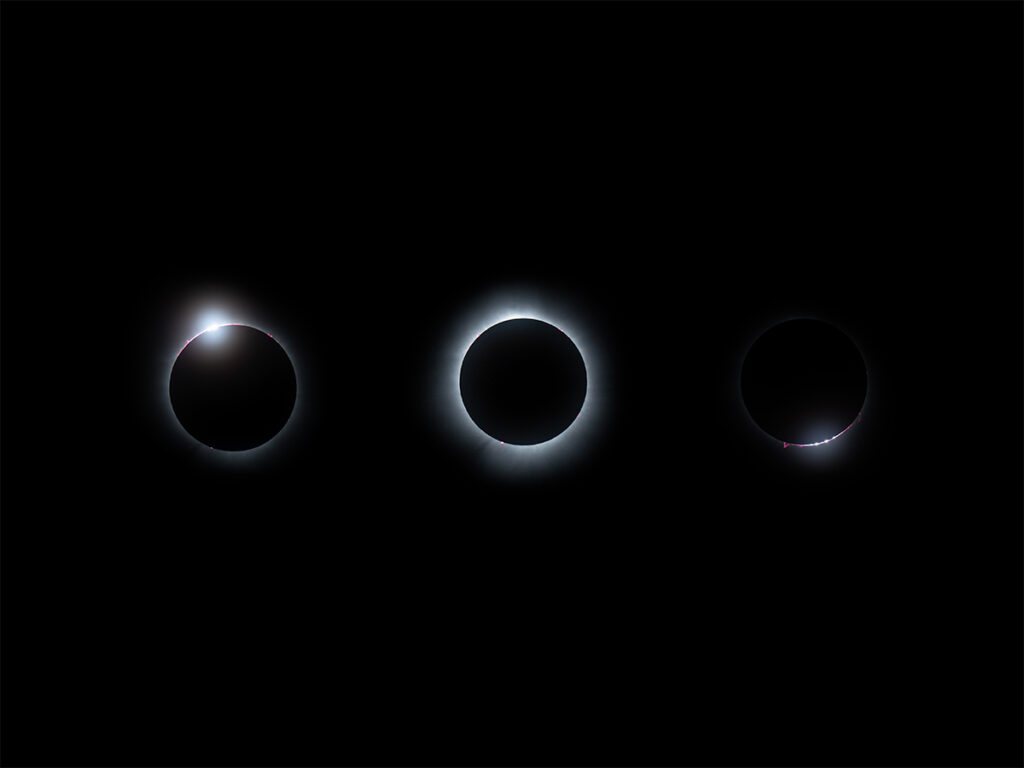
Upcoming Solar Eclipses
Through all this, I learned that solar eclipses inherently aren’t rare. They happen approximately every 18 months, and there are four types of solar eclipses:
- Partial solar eclipse
- Annular solar eclipse
- Total solar eclipse
- Hybrid solar eclipse
Before this total solar eclipse, there was an annular solar eclipse six months prior in North America. There’s also going to be another one at the end of the year but in South America. However, the next total solar eclipse in North America will be in 2044. Below is a list of all the types of solar eclipses coming up in the next couple of years. Start planning now!
Annular Solar Eclipse
- October 2024 – South America
- February 2026 – Antarctica
Partial Solar Eclipse
- March 2025 – Europe, Asia, Africa, North America, South America
- September 2025 – Australia, Antarctica
Total Solar Eclipse
- August 2026 – Spain, Iceland, Greenland
- August 2027 – Egypt
- July 2028 – Australia
Seeing The Total Solar Eclipse With My Own Eyes
The word that came to my head during the 3 minutes and 32 seconds of totality was ‘disbelief’. I had no expectations of the event. For anyone who doesn’t understand the hype of a total solar eclipse, you have to see it with your own eyes along the path of totality. 100% totality is necessary! The 99% and under areas do not experience the same effect.
The quickness of the sun’s light being blocked to yield a corona around a circle of black…
The dark blue sky while there are still harsh shadows on the ground…
The color of the yellow and orange sunset in the horizon while the sun is high overhead…
May you all get to experience such a phenomenon at least once in your life.
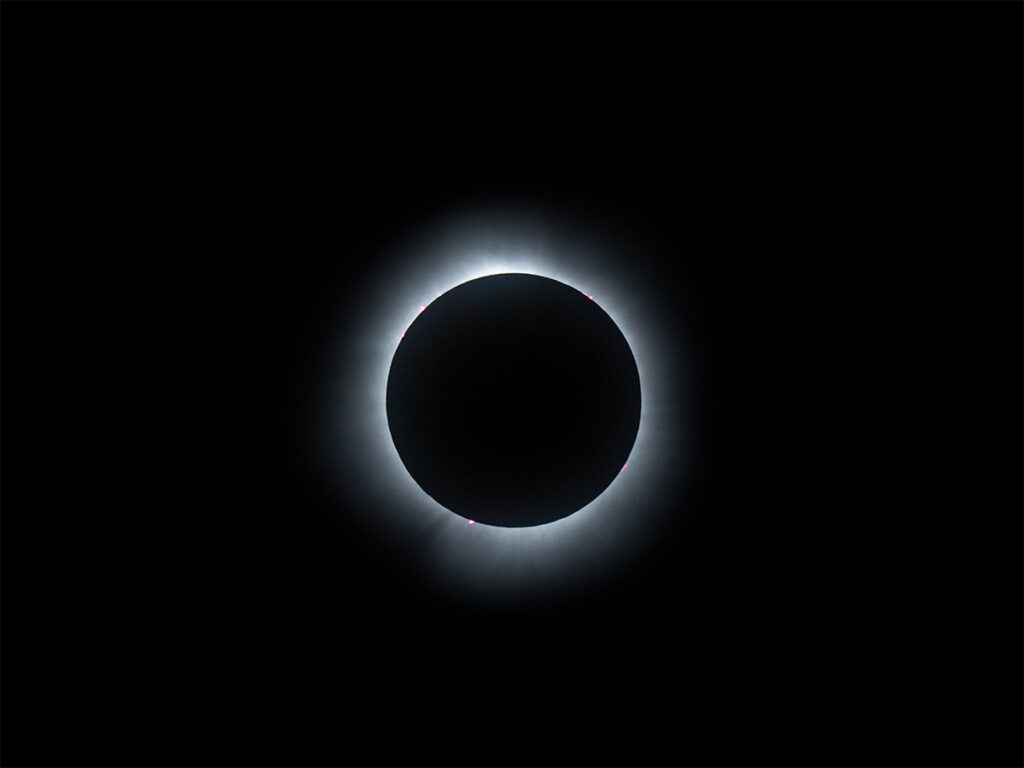
Watch on YouTube
To keep up to date with everything I share, follow along on my social media and read up on what camera gear I use when I travel.
Leave a Reply Cancel reply
is the creative studio of Erin Donahue, offering photography, videography, and content creation services for brands, hotels, tourism boards, and publications.
Based in New York City, but available globally, this multi-disciplinary digital creative left a career in the hedge fund space to pursue her passion as a travel and brand photographer, creating imagery that resonates with audiences. She approaches every project with a focus on storytelling, producing visuals that engage and inspire.
Her work has been commissioned by brands like Sony, Apple, and Google, and the content she has created has reached millions across social media.
To keep up to date with everything she shares, follow along on social media and read up on what camera gear she uses to capture the shot.
Niredonahue
© Erin Donahue Creative LLC, All Rights Reserved
Terms of Service & Privacy Policy